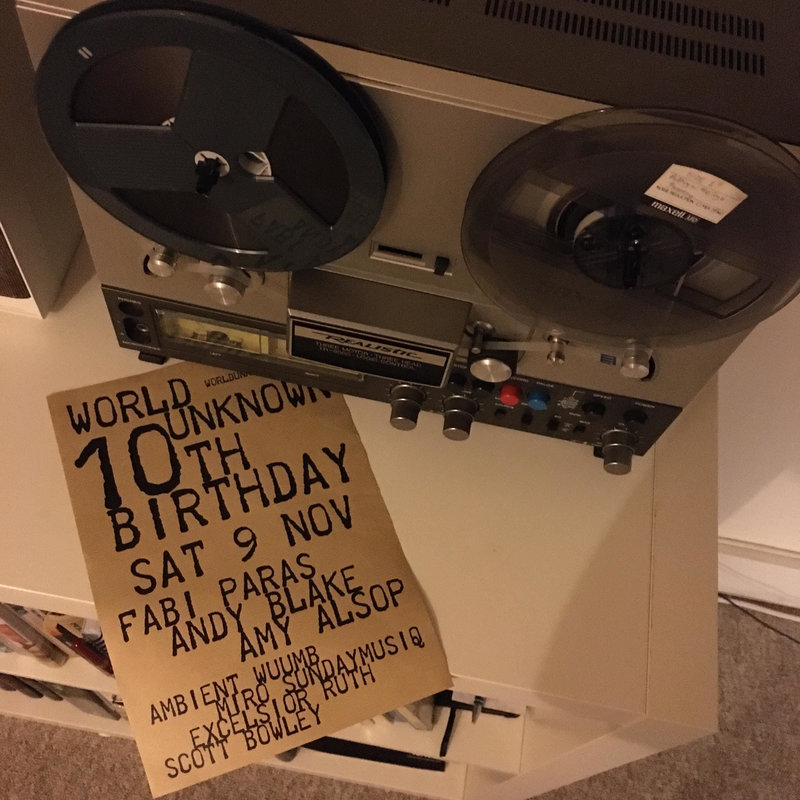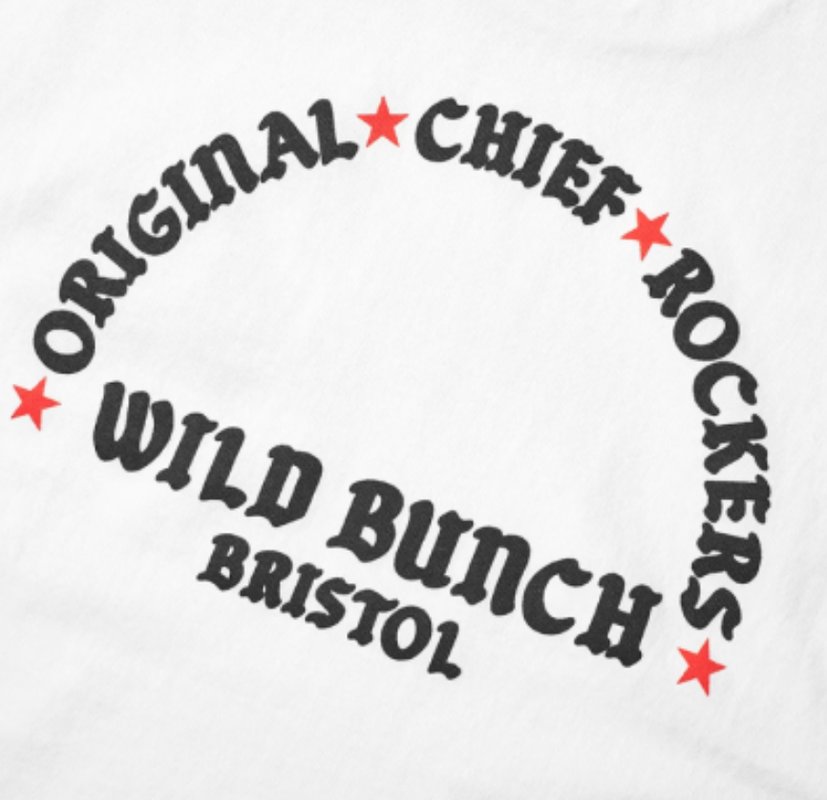James Marsh is the man behind those gorgeous Talk Talk sleeves I sat and held when I was young that felt like they took you inside the music. Staring at their 'Colour Of Spring' sleeve (it was a CD - it was the 80s) I understood for the first time the idea of the whole package. Getting lost in an object that perfectly represents the music and makes you want to rush home and hear the sound.
When did you first fall in love with visuals? How old were you?
My parent said I always had “a vivid imagination" ever since I was able to interact, so it would seem to have been inherent. I recall seeing faces in ordinary everyday things, such as clouds, curtains & shadows etc. dating back to my earliest memories. It’s probably having visions such as those, that would eventually evolve into constant recurring themes throughout my illustrative career.
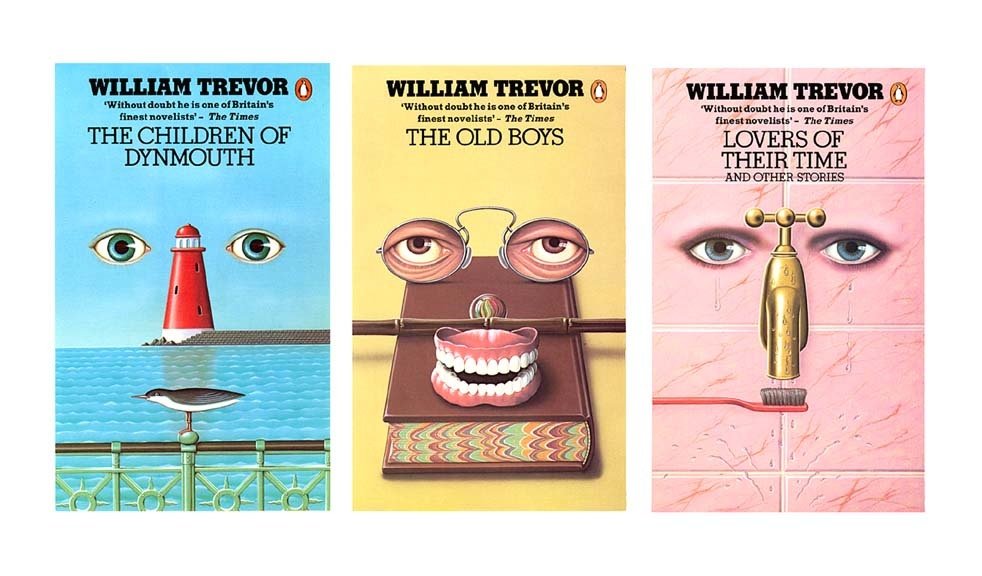
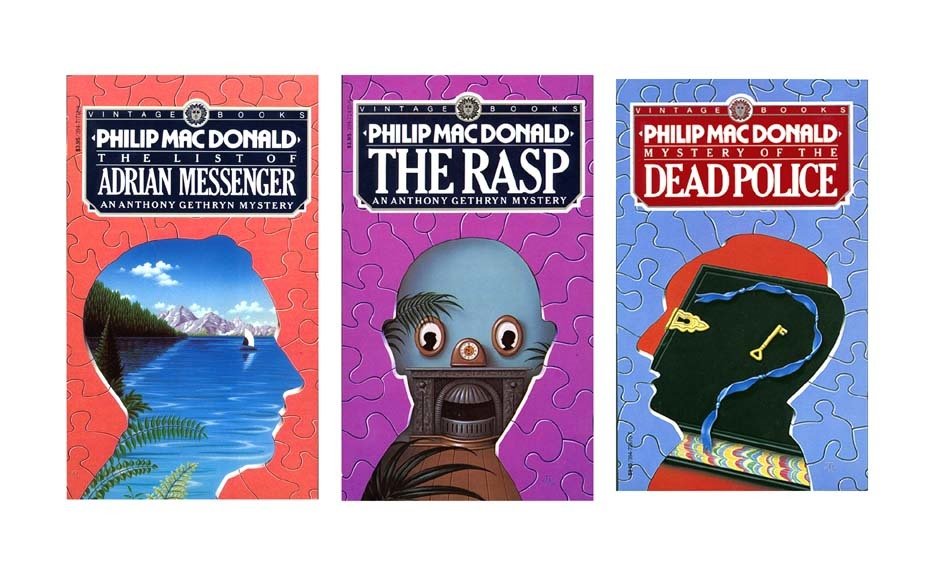
What was the first record or book sleeve that you recall vividly?
I began buying records in the late fifties at the tender age of Ten, when singles were packaged in thin slip-cases and simply embellished with the record company's logo. Pop album covers of the time were fairly mundane visually, mainly using a highly retouched publicity shot of the artist on the cover, but the 60’s changed all that for ever.
It wasn’t until the Beatles ‘Revolver' album emerged that album cover art became interesting for me as an aspiring artist. I started art college at the very dawn of the ‘60s, which was a time of aspirational change for my generation.
Prior to that, I think comic books had left a permanent influence; plus I always collected ephemera throughout my childhood - cigarette & matchbox packaging, fruit labels, stamps. beer mats etc, basically anything that was attractive to me graphically was inspiring.
What did you choose to draw as a child?
Nothing specific, like all children I copied things as a way of relating & learning.
I have one solitary page from a lined exercise book that my mother kept - On one side there's an aeroplane, and on the reverse is a lighthouse.
Who were your influences?
Apart from ephemera, whilst at college my early influences came via designers and illustrators of the time; most notably were the American ‘Pushpins group’ who set the pace for all to follow back then.
What inspires you to create?
I’m happy working on most projects, and dealing with practically any subject matter, if given a free hand creatively to interpret as I see fit.
Nowadays, I enjoy experimenting with various media in order to create something different, and also ring the changes.
Are there any particular spaces or environments that have been inspirational to your artwork?
Moving from Yorkshire to London after leaving college was something that changed me forever. It was the ‘Swinging ‘60s’ and everything seemed possible then;
it felt like we were really going somewhere, even to the moon as it turned-out. Travelling is also a great stimulation, experiencing anything new has the effect of uncovering a new layer within.
Where did you study? Any key memories from those times?
I studied Design & Display at Batley College of Art & Design in Yorkshire - Art School opened my eyes to many things, especially given that seminal period of my life.
What “scene” were you into as a teenager and into your early 20s?
Art College was the centre of my universe for the entire 5 years spent there. Also as a teenager, the music scene was a huge part of my social life, especially at the weekends.
After moving to London in my early 20’s, I became fully immersed in all aspects of 'the Arts’, absorbing and taking everything in like a dry sponge.
Did you ever think of following a different career path?
Never - I've no idea what I would be doing now if I hadn’t gone to art school, and subsequently finding a job as a junior designer with Pye Records in 1967 - moving swiftly from there to Decca records after a mere 6 months. I never looked back after getting those early design projects printed. It was this early grounding which set me on the path into illustration.

How did your creative process as digitalisation entered the fray?
When finally deciding to make the move out of London after almost 40 years, I understood the need to immerse myself in this new technology one way or another, made all the more necessary if I was to become completely self-sufficient. To begin with, and like many others of my generation, I instinctively resisted the idea of computers. The technology was still early from its inception during the early ‘90s. This new technology was pretty frustrating initially, also much less accessible or intuitive than it is today. I was fortunate in acquiring my domain name 'jamesmarsh.com' early on, before the internet’s rapid expansion. Despite the frustrating teething-troubles with technology, we all now benefit in some form or other from the internet, or World Wide Web to use it’s official title. It’s completely taken for granted now, but not since the advent of the Postal Service or the Printing Press, have communications change our lives so drastically.
I use the computer as just another tool to achieve what I’m after. This method has led directly onto experimenting digitally with collage work, which gives me a great deal more freedom than the conventional methods of collaging, as in this recent album cover and series of EP’s for the very talented singer songwriter Louise Connell...
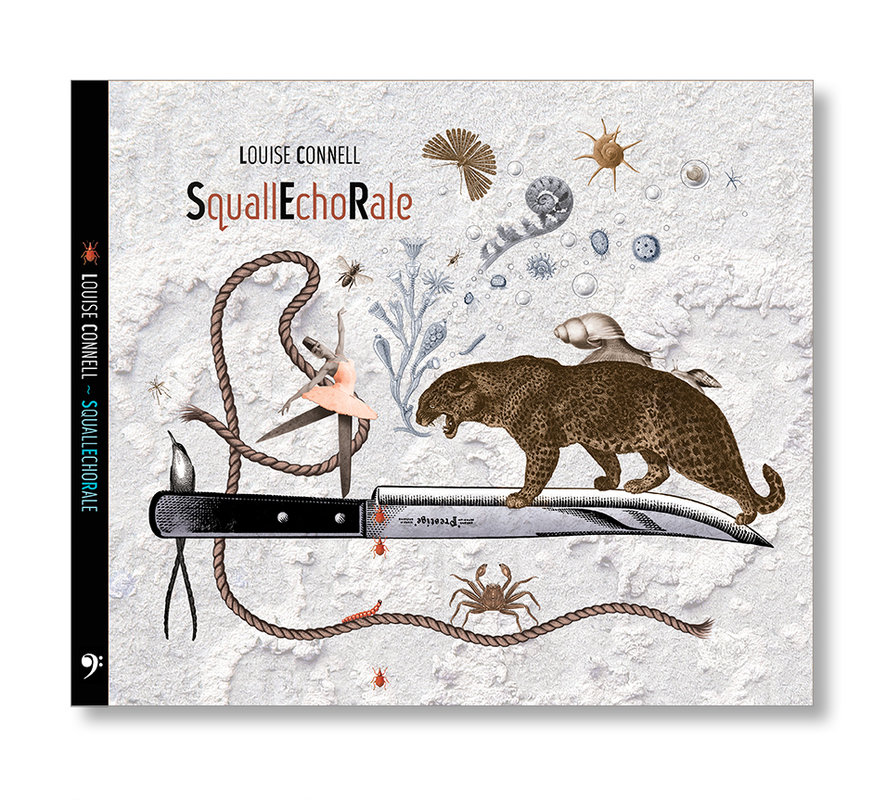

If you could choose any album cover to make the artwork for what would it be?
The same question was offered to me via The Irish Gallery ‘Hens Teeth', who produced an edition print of the artwork as part of a group show of invited artists in 2018. I chose Bob Dylan, to commemorate his Nobel prize award at the time; the hypothetical cover image intending to convey his extensive musical output, plus embodying the whole ‘60s vibe, alongside his controversial transformation when suddenly switching from ‘acoustic’ to 'electric’.
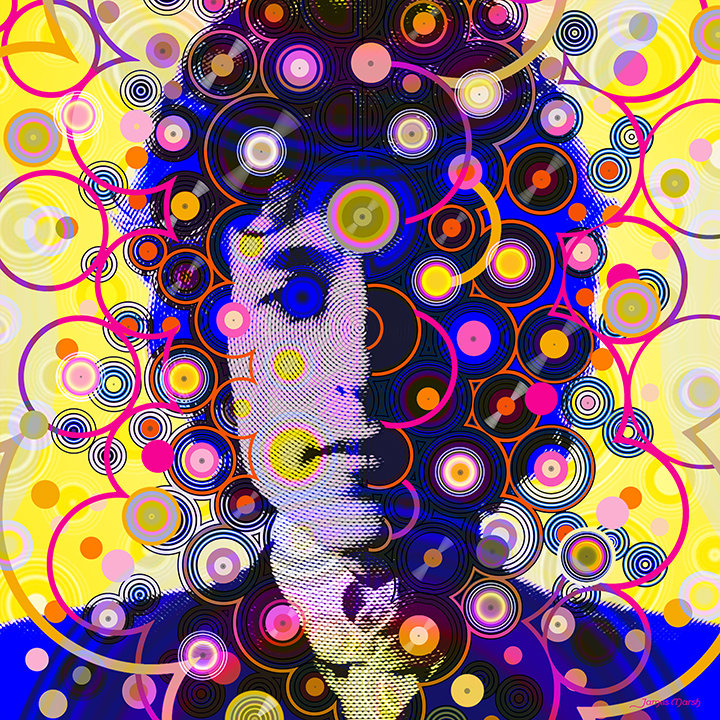
Can you describe where you work? What is your studio like?
In a word, my work today is ‘eclectic’, in so much as I don’t like to be pigeon-holed. Although most people would say it still retains a ‘surrealistic’ element. I love my studio, it’s the perfect working environment for me. The entire top floor of the house has been converted specifically for the sole purpose of being creative, complete with a panoramic view overlooking Hythe Bay, which stretches out over the English channel; the French coast is visible on a clear day, being a mere 20 miles away. The studio facilitate most of my needs, complete with several work stations, each available for whatever method I choose to employ. Plus I have a necessary store-room, alongside a messy work room for framing, painting and construction purposes. I’m surrounded with collected or found objects & imagery which I appreciate or find stimulating, but that ethos also applies to the entire house; Some of which can be found or accounted for within the work I’ve produced over the years.
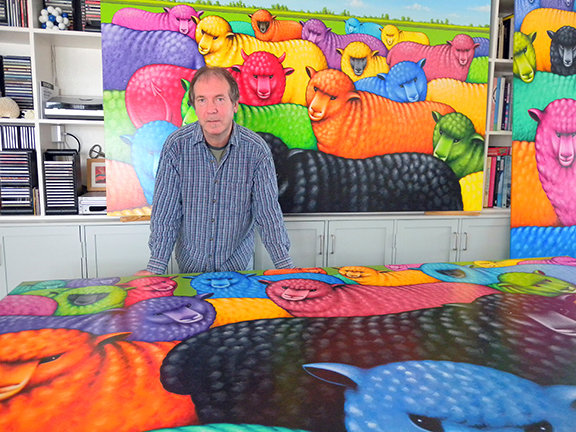
Do you listen to music when you work? If so what creates the mood?
I don’t listen to music quite so much these days when working, as it gets in the way of thought processes, unless I’m working on an album cover by the same artist, in which case it always helps to submerge oneself in the music, and thereby get on the same wavelength.
How did you first meet Talk Talk? Was it through the label?
I first met the band via their manager Keith Aspden, who I already knew socially. At the time, he was unsure how to present the band visually and asked me if I would like to give the idea some thought; that's when I came up with the notion of lips, which was subsequently used on their 1st album ’The Party’s Over’ - the image itself is basically a play on the name. Incidentally, I’ve also used this image for the cover of the 3rd ‘Spirit of Talk Talk’ imprint.
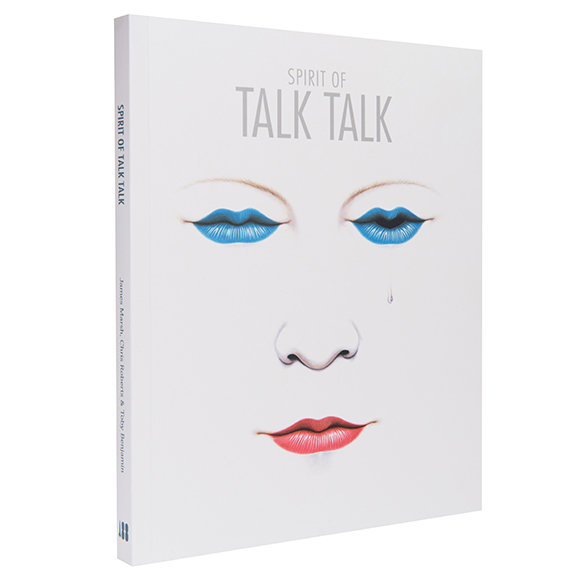
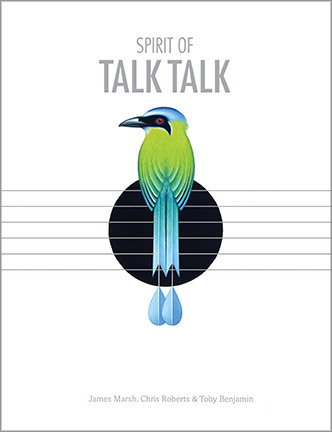

How did your life change after the iconic Talk Talk work?
It didn’t really change, except the pace got even faster - The ‘80s was a very busy, creative period for me, and I probably produced some of my most memorable works during that decade.
How does it feel being stylistically so attached to this work? Was it hard to move or work away from this?
I don’t have a problem with the association, it’s actually nice to be remembered for something. Talk Talk has become a permanent part of my life now and seems to continue to be so regardless, and I’m grateful for that. Consequently, I could never escape it, even if I wanted to. The band still has a strong fan base, as I’m constantly being reminded of, with regular requests for prints. Actually, there’s a specific celebration of the band coming up in November at the Southbank Centre, which I designed the poster for. It sold out quickly, which surely verifies their endurance on the music scene. I’ll also be launching some new large edition prints at that venue. My work is quite diverse though, reflecting the many facets of my personality, so I’m capable of applying myself to other forms of illustration, Art or Design.
How long does it take for you to create a piece of work?
On average, anything from a day to a week, depending on the complexity, although I have been known to spend up to a month on certain very detailed works, back in what feels like the dim and distant past - The 'Spirit of Eden' artwork is one of those early examples, painted as a personal piece in oils, c.1975.
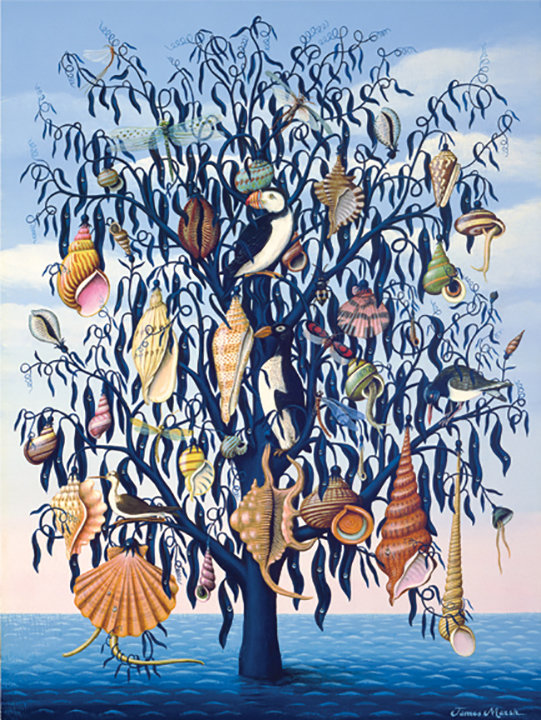
Which piece of work would you go back and change if you had the opportunity to do it again?
I don’t really have any regrets regarding the majority of the work I’ve produced throughout my career.
There will inevitably be minor things one might have wished to changed in retrospect, if the deadline was longer for example, but generally I’m still happy showing most of it on my website.
What time of day do you find is the best to create?
Anytime really, although I do seem to have constant clarity in the early mornings, before even getting out of bed - that’s the most creative part for me, the conceptual stage.
What type of project gives you the most pleasure?
Because I work in all areas of the media, from Advertising & Editorial to Publishing sectors, it could literally be any one of those, although I probably find working with musicians the most rewarding. Also album covers are a far more permanent platform for one’s art.. it stays around longer and is widely seen; Unlike some of the more ephemeral areas of work, for example -
being featured in a magazine one week, rarely to be seen again afterwards, although the internet has reversed that aspect somewhat.
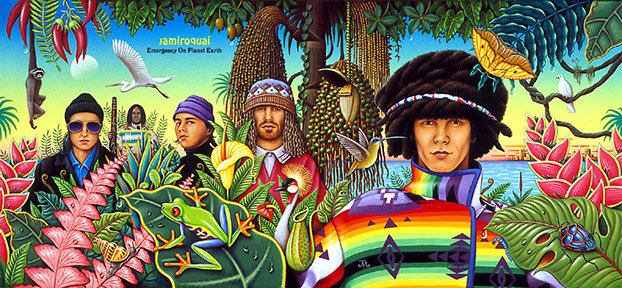
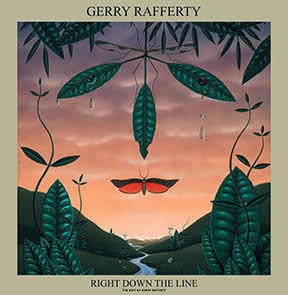
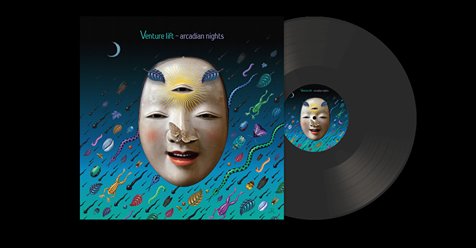
Are there any projects lined up in the future that you can share with us?
I’ve been writing my autobiography, on & off since the end of 2017. It’s intended to be comprehensively illustrated of course, although it’s really my life story played out through the different decades and environs I’ve lived in or experienced. so it deals with many aspects of my life & times, including the more personal parts.
I’m currently trying to engage with the processes of finding the right publisher, which is easier said than done… There’s also some nice album cover work in the pipeline - I tend to post new projects on my Facebook page, so anyone can check out what I’ve been doing there; all are welcome to join and connect @ facebook.com/JamesMarshArt

